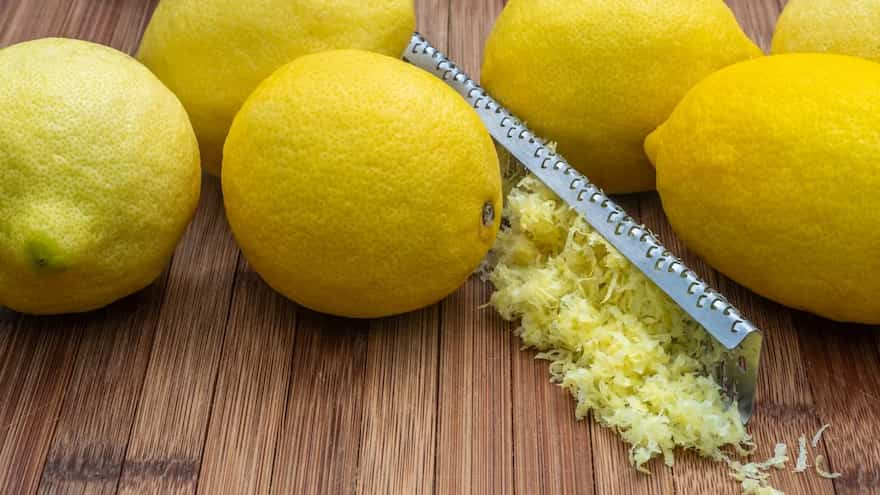All of the major citrus fruits have particularly crisp and aromatic tastes that are perfect for a number of culinary applications. Lemons, possibly the most adaptable fruit, are great in baking, cooking, sauces, and the majority of other culinary creations. Lemon juice is used in several recipes because it adds a lemony flavour and a sharp, reviving acidity. Others specify using the zest rather than the peel, which offers a greater lemon flavour with less acidity.
The zest is the tantalising and very concentrated outer skin of lemons and other citrus fruits. The structure of a lemon is as follows: The fruit itself is located inside the white pith, which most people avoid eating because to its bitter taste, while the outside yellow layer is the zest. In culinary terms, the zest is the outer skin that has been finely chopped, grated, or otherwise processed to release its bitter oils. In comparison to juice, zest has a stronger flavour and a slightly bitter undertone. The verb "zest" is also used in recipes; for example, "Zest one lemon."
 Image credit: PexelsCooking With Lemon Zest
Image credit: PexelsCooking With Lemon Zest When you want to flavour a recipe without adding more liquid, use lemon zest. Lemon zest can be added straight to sauces toward the end of cooking time to give the flavour a vibrant, fresh accent. Before grilling or baking fish or fowl, you can also sprinkle it with finely grated or minced zest. While the parts are cooking, the lemon flavour will meld with them. You can garnish curries, soups, stews, and chilis with zest, as well as add it to salad dressings and other sauces. Zest can be used to intensify the lemon flavour of baked goods (it works great in lemon muffins, for instance), to garnish grain or oatmeal bowls, and to add flavour and colour to plant-based yoghurt.
One tablespoon of zest can be obtained from a typical lemon (the one that has three tablespoons of juice). Using a tool like a fine grater or a microplane, which produces the finest pieces, will help you get the zest. Wash the lemons thoroughly to remove pesticides from the skin, and whenever possible, choose organic products. Additionally, if a recipe calls for both lemon juice and zest, zest the lemon first. It is uncomfortable and ineffective to try to zest a lemon after it has been squeezed.
Preserved Lemon Zest
Even though zest is a beneficial element while it is fresh, preserved zest has additional uses. The main benefit is that it serves as a long-term replacement for situations where fresh lemons might not be accessible. Similar to how fresh zest would be used, dried zest adds concentrated flavour to sauces, stir-fries, and baked goods. However, you can also grind dried zest in your spice grinder and use it to infuse spice rubs and marinades with a bright, tart flavour. You may add powdered zest to braising recipes to give crisp fish or shrimp a flavour all their own. The sweetness of candied zest complements sauces and glazes well.
If you keep lemon zest in an airtight, freezer-safe container, it will freeze nicely and stay at its best for about three months.


